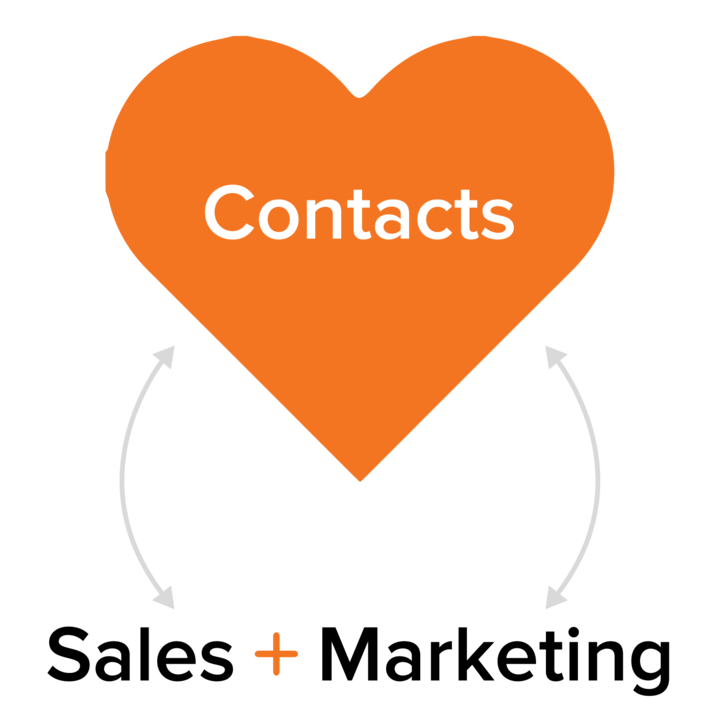Your contacts database is central to every piece of your business. When you're using HubSpot, it's central to all parts of your HubSpot account. You'll use it to keep track of all the different people who have a relationship with your business, to personalize every interaction you have with them, and to attract more contacts like them.

Whether you have a database of five contacts or 10,000, you need to understand how to think about your contacts. There's a mental model that you can implement in your business to help achieve the goal of higher engagement. Your contacts are the heart for every other piece of your marketing and sales strategy.
Learn More About HubSpot's Marketing Contacts Tool
Why Contacts?
Contacts are the heart of your marketing and sales strategy, both sides work towards the same goal, to take strangers and transform them into customers. These contacts follow along the path of the Inbound Methodology.
Take a look inside your own database, how many contacts do you have? How many of them do you know personally? Contacts are not just names and email addresses inside of a database, but individuals who you’re creating relationships with. This is the mental model you want to focus on when discussing contacts with all parts of your team.

What is a contact?
Before digging in more with this mental model lets take a look at what a contact is. A contact is anybody your company markets, sells, partners, engages with or employs. As you continue to educate and inspire them, they are telling a story through each step of the Inbound Methodology. Are you and your team telling a parallel story?
When involving both sales and marketing in your contacts strategy and having them use the same contacts database, you’re creating alignment and consistency with all parts of your inbound strategy that your contacts are interacting with.
So how should you implement and best use this model? And how can you create better alignment with your marketing and sales team?
How can you use this model?
To help assist in this alignment you will want to follow these three best practices:
- Updating your contacts database to keep it clean (both marketing and sales should be participating in this)
- Create segmented lists and filters
- Manage and discuss the lifecycle stages to ensure consistency
Ready, set, best practices.
The first step (and continued step) will be to keep your database clean. During the course of one year, your contacts database will decay up to 25-30%. This means that your contact records need to be updated or deleted from your database to make sure you have the most accurate and usable information about them.
The second best practice is to create segmented lists. Once you have an updated contacts database and are continually updating it you can start to segment your contacts. If you know that some of your contacts want to work on their blogging, you can start to build out segmented lists and filters based off this information. This allows you to bring together contacts that are similar that can be used by both Marketing and Sales to create specific actions for them.
Take a look at this example segmented list:
Imagine if every email you sent out included only recipients from segmented lists to help aim the right content at the right people. That might produce some very high open rates!
The best place to start with these lists and filters is with their lifecycle stages, the third best practice. To ensure consistency and proper use of these stages you and your team need to discuss the definitions you want to have. While HubSpot defines lifecycle stages as a default HubSpot property designed to designate where contacts are in your marketing funnel, each stage represents a transition down the funnel. Your business may have different definitions for each stage, possibility fewer than the default stages by HubSpot. To ensure that you are using these stage correctly, give each stage a definition and communicate this across the company.
Time to Execute
In the HubSpot contacts tool there’s no sync or integration between the sales and marketing contacts. It’s one database that provides your team with the most value and visibility into where your relationships are blooming with your contacts. This allows every team to to have access to the contacts to continue to implement the best practices.
There’s a lot that goes into maintaining a contacts database and alignment with your teams, so remember to keep a clean database, create segmented lists and filters and discuss lifecycle stages to ensure consistency. And overall, no matter where you’re navigating from (Sales or Marketing) you’ll be going to the same place, the heart of your business!










